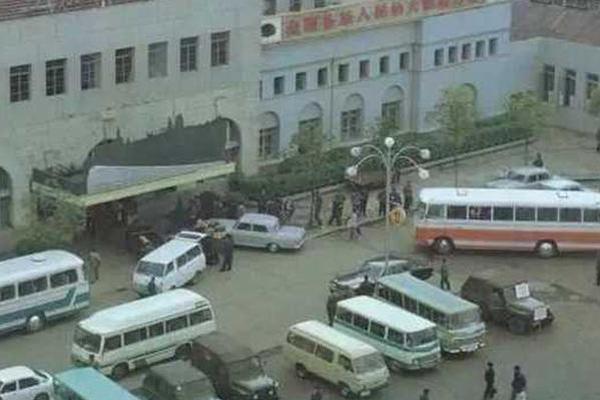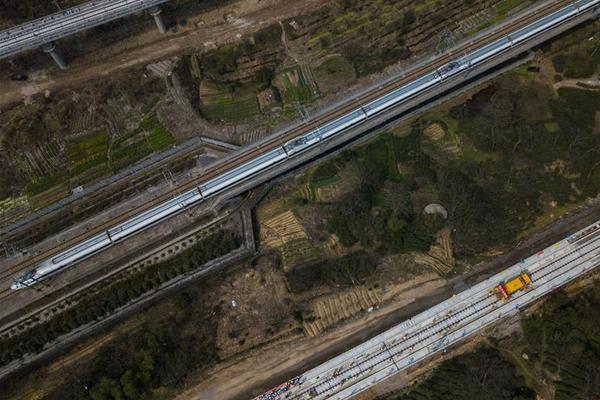
1. The failure of the oil-gas separator will cause the engine to burn oil. If the oil-gas separator fails, the oil-gas cannot be completely separated, which will cause the oil-gas to re-enter the engine to burn, increasing the fuel consumption of the engine. The oil-gas separator belongs to the forced ventilation system of the crankcase.
2. The failure of the oil-gas separator will cause the engine to burn oil. If the oil-gas separator fails, it will cause the oil and steam to be completely separated, whichThe sample will cause the oil steam to re-enter the engine and burn, which will increase the oil consumption of the engine.
3. Damage to the oil-gas separator will cause oil to burn. The function of the oil-gas separator is to separate the oil discharged from the crankcase and reduce the oil discharge from the crankcase breathing port to the engine. When the oil-gas separator works normally, it only absorbs exhaust gas without oil. If there is a problem with the oil-gas separator, it will lose the oil-gas separation function and inhale oil.
The failure of the oil-gas separator will cause the engine to burn oil. If the oil-gas separator fails, the oil-gas cannot be completely separated, which will cause the oil-gas to re-enter the engine combustion and increase the fuel consumption of the engine. The oil-gas separator belongs to the forced ventilation system of the crankcase.
If the oil-gas separator is broken, it will cause oil to burn. The function of the oil-gas separator is to separate the oil in the crankcase to discharge the gas and reduce the oil discharged from the crankcase breathing port to the outside of the engine. When the oil-gas separator is working normally, it only absorbs exhaust gas but not oil.
The failure of the oil-gas separator will affect the combustion of the oil.If the oil-gas separator fails, it will affect the inability of the oil vapor to be completely separated, thus affecting the oil vapor entering the engine combustion, which in turn affects the oil consumption. The oil-gas separator is a crankcase forced ventilation system.
The damage of the oil-gas separator will cause oil to burn. The function of the oil-gas separator is to separate the oil discharged from the crankcase and reduce the oil discharge from the crankcase breathing port to the engine. When the oil-gas separator works normally, it only absorbs exhaust gas without oil. If there is a problem with the oil-gas separator, it will lose the oil-gas separation function and inhale oil.
1. The following is an introduction to the role of oil-gas separator: Separation of oil: Separation of oil in the gas discharged from the crankcase.The above substances can be separated in time. Extend the service life: keep the oil with good lubrication performance. It is conducive to prolonging life. Reduce the wear and corrosion of machine parts: maintain the good surface condition of each friction part.
2. The function of the oil-gas separator is to separate the oil discharged from the crankcase and reduce the oil discharged from the crankcase breathing port to the outside of the engine. As the saying goes, an oil-gas separator is an exhaust valve. Also known as pressure control valve. The oil-gas separator only absorbs the exhaust gas but not the oil when it is working normally.
3. The function of the oil-gas separator is to separate the oil from the exhaust gas of the crankcase and shorten the discharge of the oil from the crankcase air outlet to the outside of the engine. The oil-gas separator is also known as the exhaust valve, and some people also call it the pressure regulating valve. When the oil-gas separator is working normally, it only absorbs exhaust gas, not oil.
1. The function of the oil-gas separator is to separate the oil from the exhaust gas of the crankcase and reduce the discharge of the oil from the crankcase air outlet to the outside of the engine. It is generally installed on the air outlet or exhaust pipe of the engine crankcase. The function of the automobile oil-gas separator is as follows: keep the oil with good lubrication performance and extend the service life of the oil.
2. The function of the oil-gas separator is to separate the oil in the gas discharged from the crankcase and reduce the oil discharge from the crankcase breathing port to the outside of the engine. The oil-gas separator is also known as the exhaust valve. Some people also call it pressure control valve. When the oil-gas separator is working normally, it only absorbs exhaust gas but not oil.
3. The oil-gas separator is a device used to continuously separate the oil and gas from the oil pump and exclude the gas mixed in the oil.
The oil-gas separator is generally installed at the engine crankcase air outlet or exhaust pipe. The oil-gas separator is also known as the exhaust valve. Some people also call it a pressure control valve. The function of the oil-gas separator is to separate the oil in the exhaust gas of the crankcase and reduce the oil from the crankcase breathing port to the outside of the engine.
Most of the oil-gas separators are installed in the local position of the engine crankcase air outlet or exhaust pipe. Oil-gas separators are also known as exhaust valves, and some people also call them pressure regulating valves. The function of the oil-gas separator is to separate the oil from the exhaust gas of the crankcase and shorten the discharge of the oil from the crankcase air outlet to the outside of the engine.
The oil-gas separator is generally installed in the breathing port of the engine crankcase or the part of the exhaust pipe.As the name implies, the function is to separate the oil in the gas of the crankcase and reduce the discharge of oil from the crankcase breathing port to the outside of the engine. [ The function of automobile oil-gas separator] Maintain the oil with good lubrication performance and extend the service life of the oil.
The part of the engine crankcase breathing port or exhaust pipe. The Oman oil-gas separator is installed in the breathing port or exhaust pipe of the engine crankcase. Its function is to separate the oil from the crankcase exhaust gas and shorten the discharge of the oil from the crankcase exhaust port.
The position of the oil-gas separator is generally in the breathing port of the engine crankcase or the exhaust pipe. The oil-gas separator is also known as the exhaust valve, which is also called the pressure control valve. The function of the oil-gas separator is to separate the oil in the crankcase to discharge the gas and reduce the oil discharged from the crankcase breathing port to the outside of the engine.
Generally, the carbon tank solenoid valve is in this engine, and you are facing the left side of the engine or under this chassis. If you don't have the left side, then you have a simple one under the chassis. This solenoid valve does not have this separator before.
OKX Wallet-APP, download it now, new users will receive a novice gift pack.
1. The failure of the oil-gas separator will cause the engine to burn oil. If the oil-gas separator fails, the oil-gas cannot be completely separated, which will cause the oil-gas to re-enter the engine to burn, increasing the fuel consumption of the engine. The oil-gas separator belongs to the forced ventilation system of the crankcase.
2. The failure of the oil-gas separator will cause the engine to burn oil. If the oil-gas separator fails, it will cause the oil and steam to be completely separated, whichThe sample will cause the oil steam to re-enter the engine and burn, which will increase the oil consumption of the engine.
3. Damage to the oil-gas separator will cause oil to burn. The function of the oil-gas separator is to separate the oil discharged from the crankcase and reduce the oil discharge from the crankcase breathing port to the engine. When the oil-gas separator works normally, it only absorbs exhaust gas without oil. If there is a problem with the oil-gas separator, it will lose the oil-gas separation function and inhale oil.
The failure of the oil-gas separator will cause the engine to burn oil. If the oil-gas separator fails, the oil-gas cannot be completely separated, which will cause the oil-gas to re-enter the engine combustion and increase the fuel consumption of the engine. The oil-gas separator belongs to the forced ventilation system of the crankcase.
If the oil-gas separator is broken, it will cause oil to burn. The function of the oil-gas separator is to separate the oil in the crankcase to discharge the gas and reduce the oil discharged from the crankcase breathing port to the outside of the engine. When the oil-gas separator is working normally, it only absorbs exhaust gas but not oil.
The failure of the oil-gas separator will affect the combustion of the oil.If the oil-gas separator fails, it will affect the inability of the oil vapor to be completely separated, thus affecting the oil vapor entering the engine combustion, which in turn affects the oil consumption. The oil-gas separator is a crankcase forced ventilation system.
The damage of the oil-gas separator will cause oil to burn. The function of the oil-gas separator is to separate the oil discharged from the crankcase and reduce the oil discharge from the crankcase breathing port to the engine. When the oil-gas separator works normally, it only absorbs exhaust gas without oil. If there is a problem with the oil-gas separator, it will lose the oil-gas separation function and inhale oil.
1. The following is an introduction to the role of oil-gas separator: Separation of oil: Separation of oil in the gas discharged from the crankcase.The above substances can be separated in time. Extend the service life: keep the oil with good lubrication performance. It is conducive to prolonging life. Reduce the wear and corrosion of machine parts: maintain the good surface condition of each friction part.
2. The function of the oil-gas separator is to separate the oil discharged from the crankcase and reduce the oil discharged from the crankcase breathing port to the outside of the engine. As the saying goes, an oil-gas separator is an exhaust valve. Also known as pressure control valve. The oil-gas separator only absorbs the exhaust gas but not the oil when it is working normally.
3. The function of the oil-gas separator is to separate the oil from the exhaust gas of the crankcase and shorten the discharge of the oil from the crankcase air outlet to the outside of the engine. The oil-gas separator is also known as the exhaust valve, and some people also call it the pressure regulating valve. When the oil-gas separator is working normally, it only absorbs exhaust gas, not oil.
1. The function of the oil-gas separator is to separate the oil from the exhaust gas of the crankcase and reduce the discharge of the oil from the crankcase air outlet to the outside of the engine. It is generally installed on the air outlet or exhaust pipe of the engine crankcase. The function of the automobile oil-gas separator is as follows: keep the oil with good lubrication performance and extend the service life of the oil.
2. The function of the oil-gas separator is to separate the oil in the gas discharged from the crankcase and reduce the oil discharge from the crankcase breathing port to the outside of the engine. The oil-gas separator is also known as the exhaust valve. Some people also call it pressure control valve. When the oil-gas separator is working normally, it only absorbs exhaust gas but not oil.
3. The oil-gas separator is a device used to continuously separate the oil and gas from the oil pump and exclude the gas mixed in the oil.
The oil-gas separator is generally installed at the engine crankcase air outlet or exhaust pipe. The oil-gas separator is also known as the exhaust valve. Some people also call it a pressure control valve. The function of the oil-gas separator is to separate the oil in the exhaust gas of the crankcase and reduce the oil from the crankcase breathing port to the outside of the engine.
Most of the oil-gas separators are installed in the local position of the engine crankcase air outlet or exhaust pipe. Oil-gas separators are also known as exhaust valves, and some people also call them pressure regulating valves. The function of the oil-gas separator is to separate the oil from the exhaust gas of the crankcase and shorten the discharge of the oil from the crankcase air outlet to the outside of the engine.
The oil-gas separator is generally installed in the breathing port of the engine crankcase or the part of the exhaust pipe.As the name implies, the function is to separate the oil in the gas of the crankcase and reduce the discharge of oil from the crankcase breathing port to the outside of the engine. [ The function of automobile oil-gas separator] Maintain the oil with good lubrication performance and extend the service life of the oil.
The part of the engine crankcase breathing port or exhaust pipe. The Oman oil-gas separator is installed in the breathing port or exhaust pipe of the engine crankcase. Its function is to separate the oil from the crankcase exhaust gas and shorten the discharge of the oil from the crankcase exhaust port.
The position of the oil-gas separator is generally in the breathing port of the engine crankcase or the exhaust pipe. The oil-gas separator is also known as the exhaust valve, which is also called the pressure control valve. The function of the oil-gas separator is to separate the oil in the crankcase to discharge the gas and reduce the oil discharged from the crankcase breathing port to the outside of the engine.
Generally, the carbon tank solenoid valve is in this engine, and you are facing the left side of the engine or under this chassis. If you don't have the left side, then you have a simple one under the chassis. This solenoid valve does not have this separator before.
OKX Wallet apk download latest version
author: 2025-02-02 17:14 Binance market
Binance market
158.85MB
Check Okx app download
Okx app download
498.61MB
Check Binance wallet
Binance wallet
443.42MB
Check Binance APK
Binance APK
466.69MB
Check Binance login
Binance login
369.35MB
Check okx.com login
okx.com login
332.14MB
Check Binance wikipedia
Binance wikipedia
464.75MB
Check Binance Download for PC
Binance Download for PC
273.84MB
Check Binance exchange
Binance exchange
493.68MB
Check Okx app download
Okx app download
395.77MB
Check Binance login App
Binance login App
651.96MB
Check Binance app
Binance app
831.23MB
Check OKX Wallet to exchange
OKX Wallet to exchange
282.74MB
Check OKX Wallet extension
OKX Wallet extension
376.51MB
Check OKX Wallet login
OKX Wallet login
368.53MB
Check OKX Wallet to exchange
OKX Wallet to exchange
122.72MB
Check Binance download APK
Binance download APK
941.69MB
Check Binance app
Binance app
667.33MB
Check OKX app
OKX app
598.89MB
Check Binance login
Binance login
659.33MB
Check Binance login
Binance login
474.54MB
Check Binance app
Binance app
371.31MB
Check Binance market
Binance market
777.49MB
Check Binance download
Binance download
687.55MB
Check OKX Wallet extension
OKX Wallet extension
382.14MB
Check Binance wikipedia
Binance wikipedia
926.55MB
Check Binance wallet
Binance wallet
248.53MB
Check Binance app download Play Store
Binance app download Play Store
269.44MB
Check Binance download
Binance download
575.62MB
Check Okx app download
Okx app download
187.68MB
Check Binance market
Binance market
117.38MB
Check OKX Wallet app download for Android
OKX Wallet app download for Android
394.84MB
Check Binance Download for PC Windows 10
Binance Download for PC Windows 10
872.46MB
Check Binance download
Binance download
454.78MB
Check OKX Wallet app
OKX Wallet app
969.18MB
Check OKX Wallet login
OKX Wallet login
415.51MB
Check
Scan to install
OKX Wallet to discover more
Netizen comments More
954 白发丹心网
2025-02-02 17:23 recommend
1113 骥伏盐车网
2025-02-02 16:21 recommend
1842 银钩铁画网
2025-02-02 15:48 recommend
974 继往开来网
2025-02-02 15:34 recommend
2832 奉公不阿网
2025-02-02 15:31 recommend